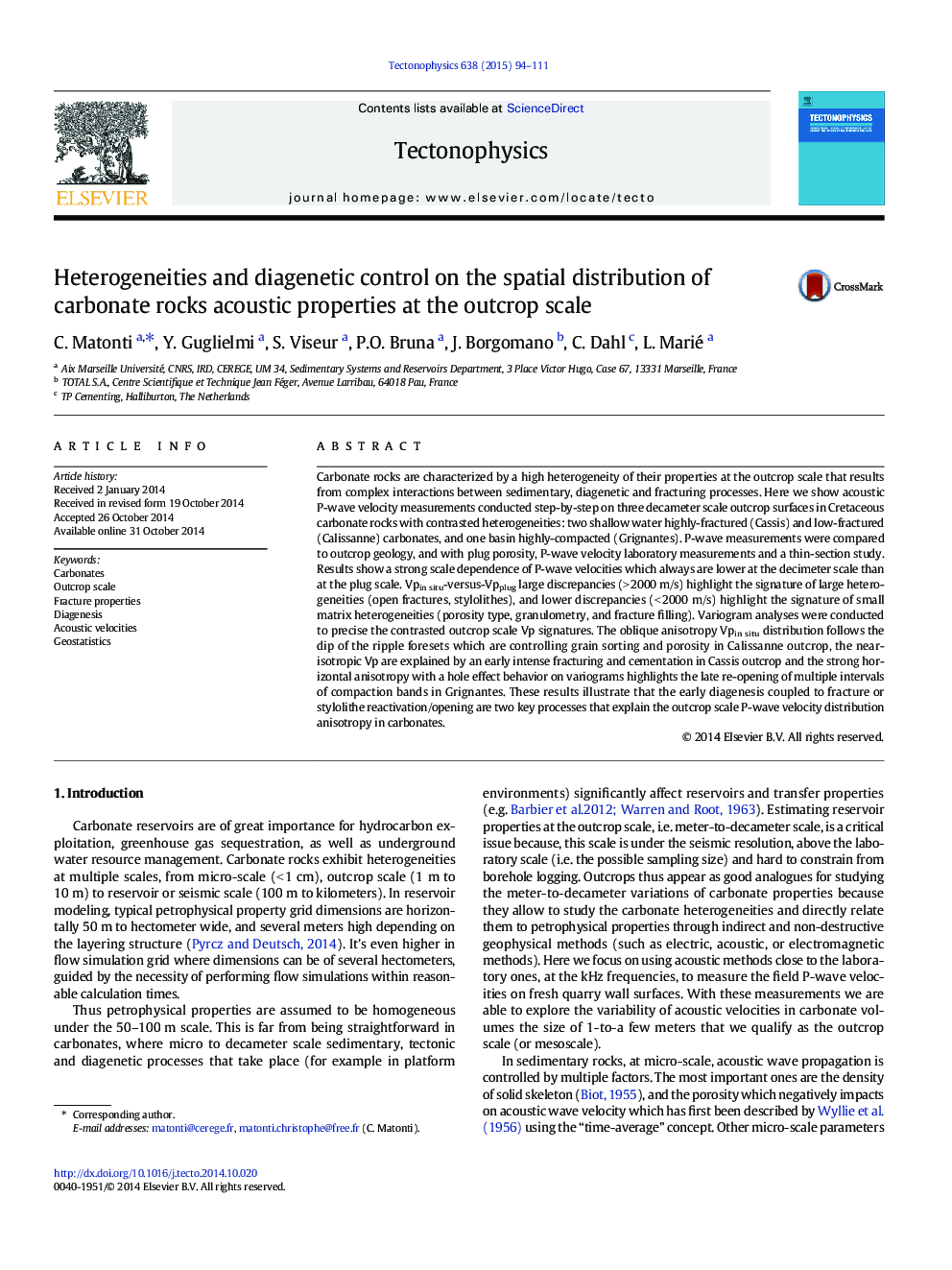| Article ID | Journal | Published Year | Pages | File Type |
|---|---|---|---|---|
| 6433737 | Tectonophysics | 2015 | 18 Pages |
â¢Study of carbonate outcrops with contrasted heterogeneity (porosity, fracturesâ¦).â¢Outcrop Vp measurements on field, plug Ï and variogram analysis were performed.â¢Impact of sed. structure, diagenesis and frac. aperture on Vp values and anisotropy.â¢There is a strong scale dependence of Vp between mesocale and plug scale.â¢Estimation of the timing of mesoscale petrophysical properties acquisition.
Carbonate rocks are characterized by a high heterogeneity of their properties at the outcrop scale that results from complex interactions between sedimentary, diagenetic and fracturing processes. Here we show acoustic P-wave velocity measurements conducted step-by-step on three decameter scale outcrop surfaces in Cretaceous carbonate rocks with contrasted heterogeneities: two shallow water highly-fractured (Cassis) and low-fractured (Calissanne) carbonates, and one basin highly-compacted (Grignantes). P-wave measurements were compared to outcrop geology, and with plug porosity, P-wave velocity laboratory measurements and a thin-section study.Results show a strong scale dependence of P-wave velocities which always are lower at the decimeter scale than at the plug scale. Vpin situ-versus-Vpplug large discrepancies (>Â 2000Â m/s) highlight the signature of large heterogeneities (open fractures, stylolithes), and lower discrepancies (<Â 2000Â m/s) highlight the signature of small matrix heterogeneities (porosity type, granulometry, and fracture filling). Variogram analyses were conducted to precise the contrasted outcrop scale Vp signatures. The oblique anisotropy Vpin situ distribution follows the dip of the ripple foresets which are controlling grain sorting and porosity in Calissanne outcrop, the near-isotropic Vp are explained by an early intense fracturing and cementation in Cassis outcrop and the strong horizontal anisotropy with a hole effect behavior on variograms highlights the late re-opening of multiple intervals of compaction bands in Grignantes. These results illustrate that the early diagenesis coupled to fracture or stylolithe reactivation/opening are two key processes that explain the outcrop scale P-wave velocity distribution anisotropy in carbonates.
